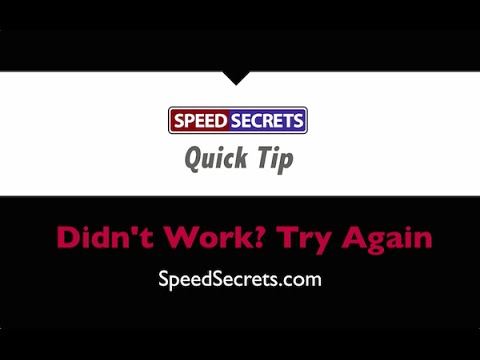Q: “We are taught to use 100% of the available track, to increase radius to increase mid-corner speed for a given lateral G capacity of our tires. At what point are there diminishing returns for using the entire available track versus the shortest distance? I have always wondered this. Turn 7 at Portland International Raceway is a good example, as they widened the track a few years ago and I see some drivers use it all, and some not. You can keep imagining if we open up the track more and more, eventually there must be a point where it is no longer beneficial to use all the track available, right?”
A: You bring up a super-important point, and the answer is not easy. Why? Because it depends. But you hit the nail on the head when you referred to the trade-off between a larger radius (which results in being able to drive faster through a corner), and the distance covered.
As with any trade-off, the only way to know for sure is to try it, and measure it to see which way works best. But a couple of words of warning here: First, if you’re trying a different way – something you’ve not done before – give it a fair shot. That means you’re going to need to do it more than once or twice! I know of drivers who have tried a different line a couple of times and concluded that it didn’t work – before they’d ever gotten close to having done it right.
Second, what feels faster may not be. The only way to know for sure is to do segment times and/or compare with data. But even with that, you can fool yourself into thinking one way is better than the other if you don’t measure properly. If you’re using data, it’s important that you segment the track the right way so you get accurate information. I answered a question about this at https://speedsecrets.com/ask-ross/where-do-i-divide-up-sectors-when-analyzing-data/.
I wish there was a simple answer, and I could say, “Always do this.” But that would be wrong. I can’t even say that 51% of the time the shorter distance is the best way to go, or the larger radius is. And, what works best in one car – say a low horsepower car with lots of cornering grip – may not in another, like a high-horsepower, low grip car.
I said that you can’t always trust your gut feel on this, because sometimes one way will feel faster when it’s not. But it’s important to at least listen to your gut, and then calibrate it with what you learn through the data. Over time you will fine-tune your ability to sense what truly is the fastest way to drive without always having to rely on the data. Check out this video about giving a change enough of a chance to work: https://youtu.be/veqoLzXHSy0.
Finally, I did a short video on using all the track a while back and posted it to my YouTube channel here: https://youtu.be/O627IMNS7fc.

